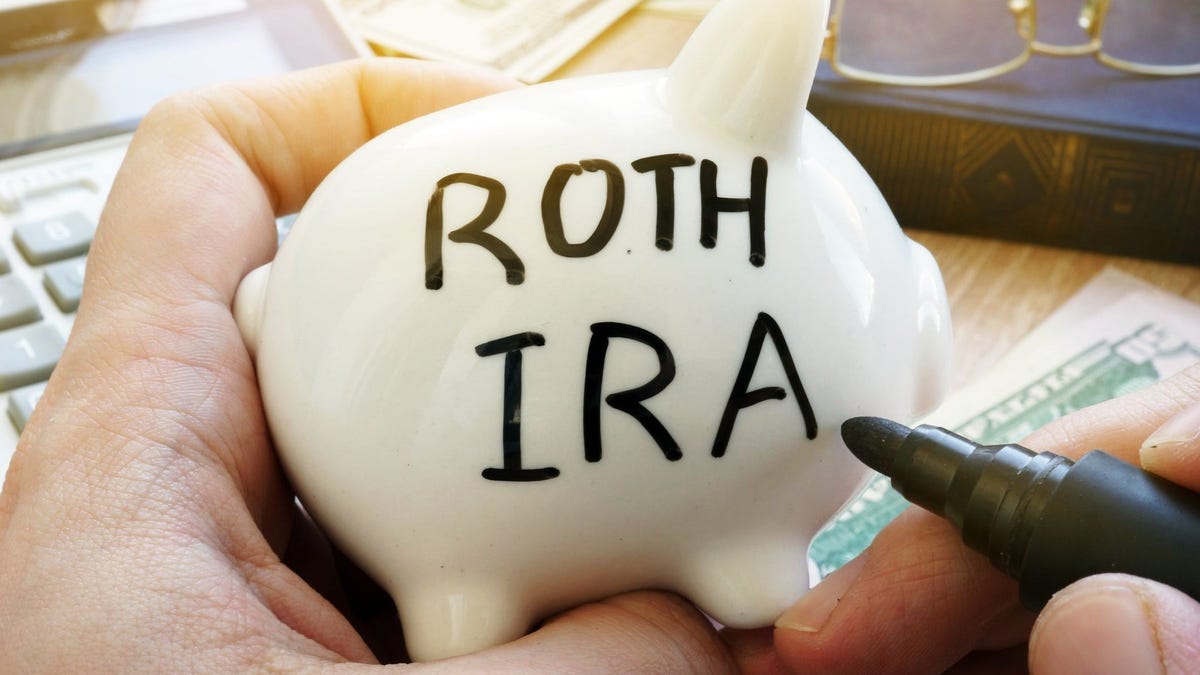LATEST FINANCIAL NEWS
Here’s why you should consider a Roth IRA conversion
Robert Powell
| Special to USA TODAY
Which Will Give You More To Spend In Retirement: Traditional Or Roth 401(k)?Which will earn you more over time: a traditional 401(k) or a Roth 401(k) retirement account?WochitTo some the Roth individual retirement account, which now represents $1 trillion in assets in the U.S. and is the fastest-growing segment of the U.S retirement markets, is the perfect retirement account.Consider: Contributions (up to $6,000 or $7,000 if you’re 50 or older) are made with after-tax dollars; your money grows tax-free; and withdrawals may be made tax-free after a required holding period. What’s more, unlike a traditional IRA, there are no required minimum distributions (RMDs) for as long as you live. Plus, the distributions won’t increase federal income tax you might pay on your Social Security benefits. And the Roth IRA is an income-tax free inheritance for your beneficiaries.There’s also no age limit to funding a Roth IRA. If you have earned income, you can fund a Roth IRA. And unlike with a traditional IRA, you can still fund a Roth IRA even if you have an employer-sponsored retirement plan.To be fair, your contributions may be limited by how much you earn. But there’s a way around that for some. It’s called a Roth IRA conversion.Special retirement plan rules of 2020: What you need to know about your plan amid COVID-19What to know about a Roth IRA conversionThe Roth IRA conversion works this way: You take a distribution from your traditional IRA or 401(k) and contribute that money into a Roth IRA. There are no income limits for this tactic and the reasons for doing a Roth IRA conversion are many.Many advisers believe tax rates will rise over time. By taking a distribution from your traditional IRA you’ll be paying less in taxes now than if you took a distribution from your traditional IRA in the future.“Roth conversions can make sense only if you believe that taxes in general, or your tax rate in particular, will be higher in the future than they are today,” says Mark Byelich, a certified financial planner with Attleboro Wealth Management.And that’s likely to happen according to his research, which suggests that the average middle class American will be in the 40-45% effective tax rate within the next 10 to 15 years. Preparing for retirement: Give your 401(k) a 2021 checkup in 5 simple stepsWhat’s more, Cerulli Associates recently noted that legislative changes could further motivate individuals to save on a Roth basis or convert traditional balances to Roth. For instance, the Setting Every Community Up for Retirement Enhancement (SECURE) Act of 2019, which eliminated the so-called stretch IRA, now requires non-spousal beneficiaries to draw down the entire IRA balance within 10 years of the account owner’s death.“This could motivate IRA account holders (especially those with high-earning beneficiaries) to favor Roth accounts, allowing for tax-free distributions in the future,” Cerulli Associated noted in its report.Others agree. “The SECURE Act added the complexity of removing RMDs and created a D-Day event for beneficiaries,” said Joseph Clark, a managing partner with Financial Enhancement Group. “The Roth conversion eliminates the D-Day impact of all the income being taxable in one year for uniformed heirs.”Distributions have consequences. To be sure, the distribution from your traditional IRA could have short-term financial consequences. In a recent webinar, Matt Curfman and Dan Vredeveld, both certified financial planner with Richmond Brothers, noted that distributions could push you into a higher tax bracket and lead you to pay more tax on capital gains, or lead to additional tax on your Social Security income, or you might pay a higher than standard Medicare Part B and Part D premium because of something called the income related monthly adjustment amount, or you might lose some or all of the premium tax credit that you receive to cover the premiums for your health insurance purchased through the Health Insurance Marketplace.Avoid these mistakes. Advisers also caution against making Roth IRA conversion – or what some call an IRA-to-Roth-IRA rollover – mistakes. For instance, make sure the funds are transferred trustee to trustee. Note too that SIMPLE IRAs cannot be converted until after two years and inherited IRAs cannot be converted into a Roth IRA. What’s more, RMDs from a traditional IRA cannot be converted into a Roth IRA.A back-door Roth IRA. If you earn too much to contribute to a Roth IRA, consider a “back-door Roth IRA.”With this tactic, you would contribute to a nondeductible traditional IRA, which doesn’t have an income limit for contributions, and then convert those funds into a Roth – income tax-free. One caveat: This strategy works best if you don’t have an existing traditional IRA. If you do have an existing traditional IRA, you’ll be subject to the IRS’ pro rata rule and be required to pay taxes on a portion of the conversion.Robert Powell, CFP, is the editor of TheStreet’s Retirement Daily and contributes regularly to USA TODAY. Got questions about money? Email Bob at rpowell@allthingsretirement.com.
Source link









